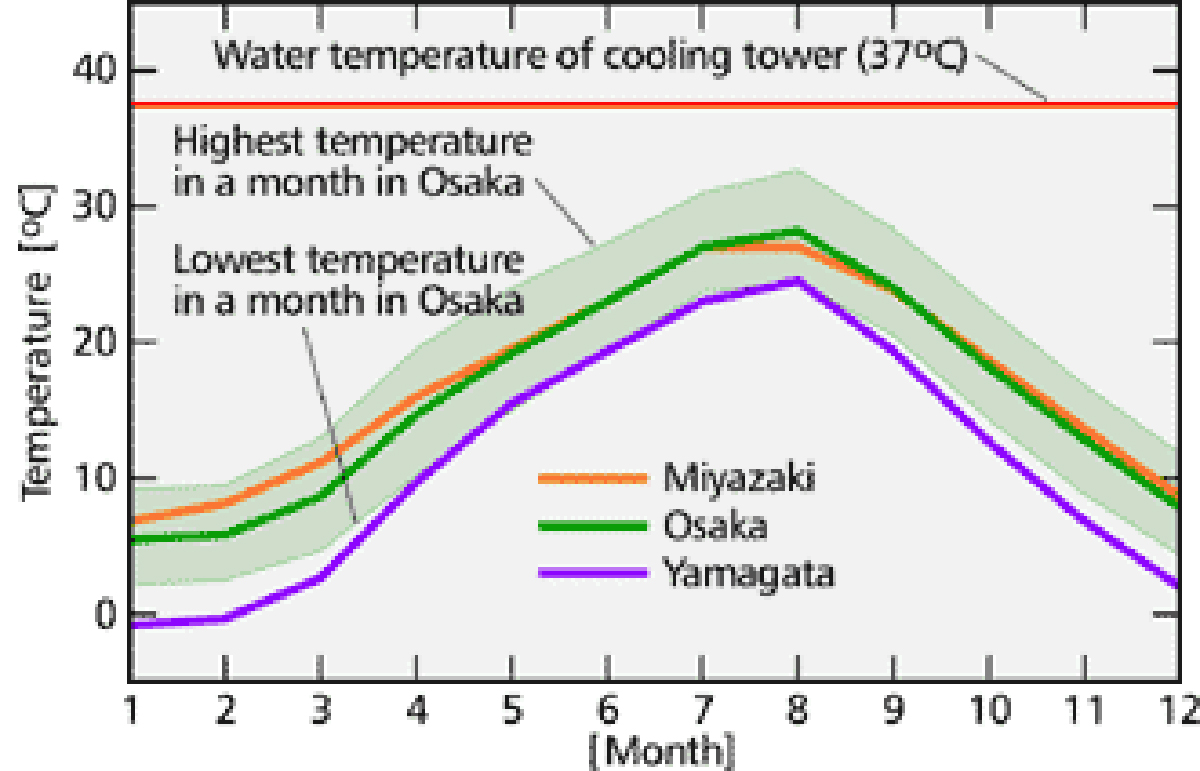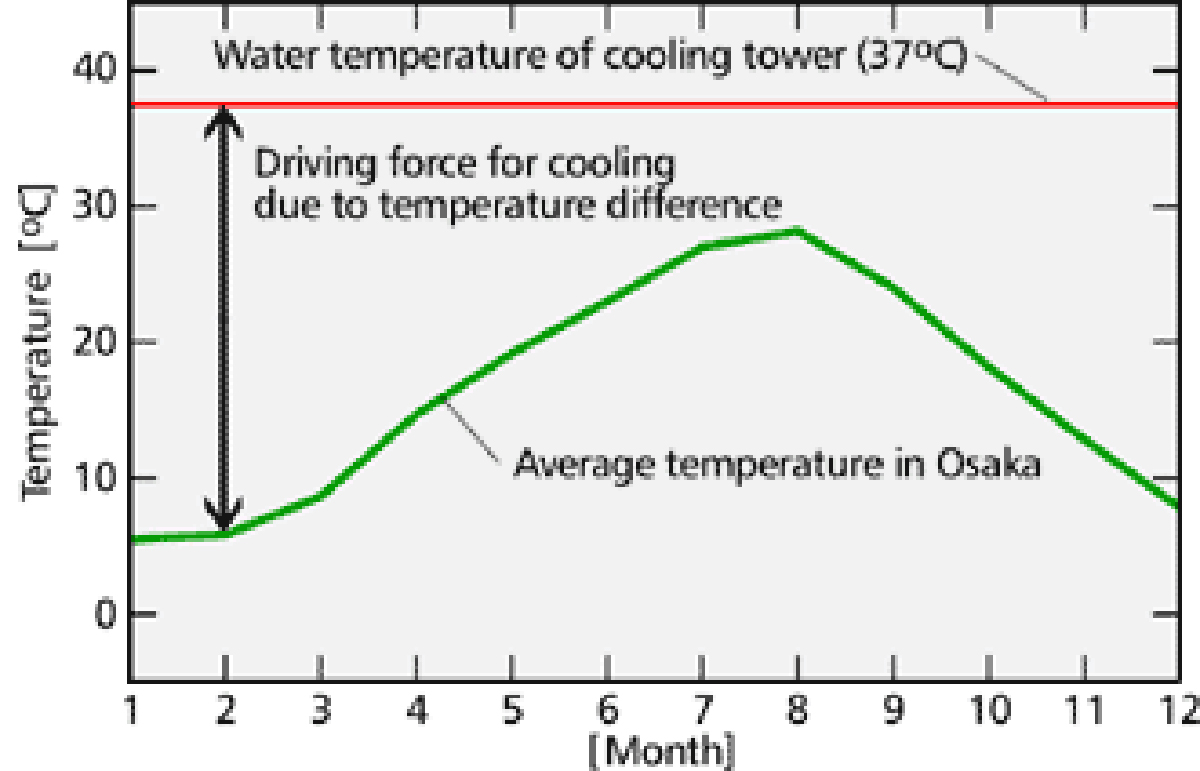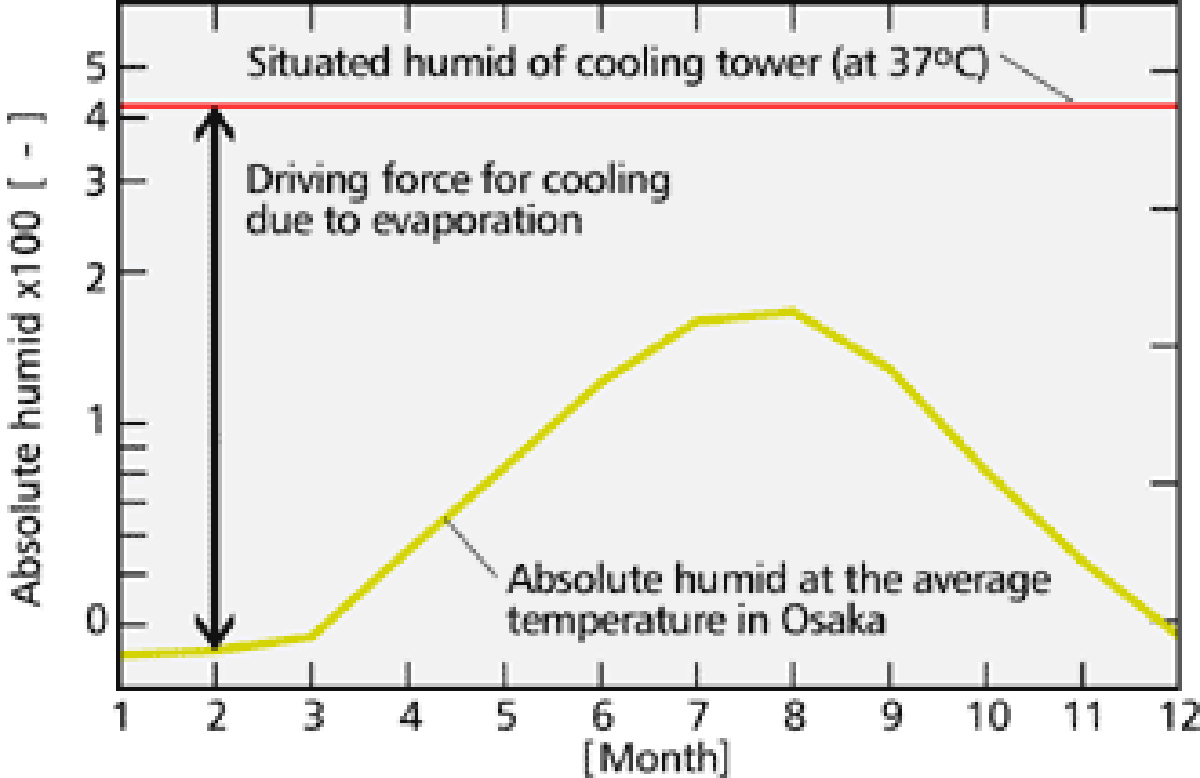To decrease electrical expense
If you use the secondary cooling system, you can reduce the consumption of extra electricity caused by the heat transfer resistance and the friction resistance in accumulated deposits. (See “Fouling in cooling water system”). In addition, you can save electricity through adjustments in temperature setting and pumping power by considering heat-load fluctuations or seasonal variations affecting the power of the cooling tower.
Temperature adjustment
Refrigerators are often used to cool mold cooling water. But in many cases refrigerated cold water is not needed, if you examine the molding conditions as follows.
● If the mold temperature is above 40℃, the mold can be cooled by using water at about 35℃. Cooling water above 35℃ can be obtained by using cooling towers that consume much less electricity than refrigerators.
● Even when the mold temperature is below 40℃ and the cooling water needs to be cooled by refrigerators, it is possible to reduce electricity by adjusting the temperature setting. Too often very low temperatures are chosen unnecessarily.
● It is more effective for rapid cooling to use a large volume flow than to use unnecessarily cold water.
● Energy saving operations can be added to our Secondary Cooling Systems. One of the operations involves switching over refrigerators and cooling towers automatically according to the cooling water temperature required and ambient temperature.
Seasonal variations of cooling tower power
The power of the cooling tower is affected by ambient temperature and humidity. 【Fig-01】 shows the monthly average temperatures in Yamagata (north Japan), Osaka (middle Japan) and Miyazaki (south Japan), as well as the highest and lowest temperatures in Osaka.
In a cooling tower, there are two types of heat transfer; one is the temperature difference between ambient temperature and water; two is that which is caused by water evaporation. Therefore the power of cooling tower is higher in winter than summer (【Fig-02】).
In addition the absolute humidity in winter is 10 times less humid than in summer, which means that the evaporation rate of water also varies (【Fig-03】). As a result, both the temperature difference and the evaporation rates are greater in winter than in summer. The cooling power is approximately 2.4 times greater in winter than in summer.
Therefore, you can cut down the water supply rates or stop fans of cooling towers to obtain enough cooling capacity in cold seasons or nighttime, which reduces electricity expense.

【Fig-01 Monthly average temperature in three districts
and highest and lowest temperature in Osaka】

【Fig-03 Monthly change in average temperature
and the power of cooling water】

【Fig-03 Monthly change in absolute humidity
and the power of cooling water】
